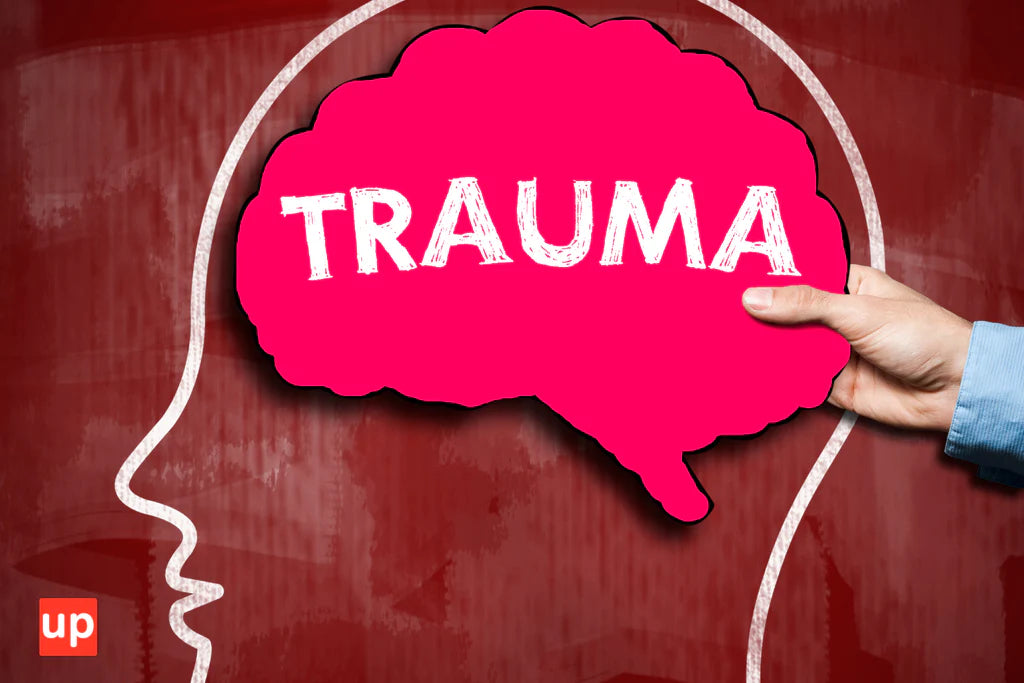Introduction:
Childhood trauma is a pervasive issue that has far-reaching consequences for children's emotional, psychological and physical well-being. The impact of trauma on children can be profound, affecting their developmental trajectory and overall quality of life.
In this article, we will delve into the importance of understanding and addressing childhood trauma, using trauma-informed approaches to unlock hope and facilitate healing.
 Impact on adult life
Impact on adult life
Childhood trauma can have profound and lasting effects on individuals as they transition into adulthood. Sequences of childhood trauma often manifest in different ways, affecting different aspects of a person's life in adulthood.
Emotionally, adults who experienced trauma in infancy or childhood may struggle in adulthood with difficulties regulating their emotions, experience severe mood swings, or experience increased anxiety or depression.
Cognitively, it can affect cognitive function, affecting memory, attention and problem-solving skills.
On an interpersonal level, people who experienced childhood trauma may find it difficult to establish and maintain healthy relationships, experience trust issues or exhibit patterns of avoidance or withdrawal.
Physically, it can lead to a higher risk of physical health problems, including chronic pain, cardiovascular disease and autoimmune disorders.
In addition, individuals who have experienced trauma in childhood,may be at increased risk of engaging in high-risk behaviors, such as substance abuse or self-harm as a means of coping.
These sequences of childhood trauma highlight the need for trauma-based support and interventions to address long-term effects and promote healing in adulthood.
I. The nature of childhood trauma
Childhood trauma refers to adverse experiences that undermine their ability to cope and disrupt their sense of security and safety.
It encompasses a range of traumatic events, such as physical abuse, sexual abuse, neglect, exposure to violence or natural disasters (1). Each type of trauma can have a unique impact on a child's development, affecting areas such as cognitive functioning, emotional regulation and social relationships (2).
II. Understanding childhood trauma
In order to effectively address childhood trauma, it is vital to adopt a trauma-informed approach to care that recognizes the complex interplay between trauma exposure, neurological processes, and behavioral manifestations (3).
Trauma-informed care involves understanding the impact of trauma on brain development and the stress response system. By understanding these mechanisms, professionals and caregivers can provide appropriate support and interventions tailored to the child's needs.
 III. Identification of the trauma and its effects
III. Identification of the trauma and its effects
Recognition of the signs and symptoms of trauma is essential for early identification and intervention. These manifestations may vary depending on the child's age, developmental stage and individual resilience factors.
Common signs include hyperarousal, hyper-vigilance, intrusive thoughts, sleep disturbances, aggression, emotional dysregulation and social withdrawal (4).
By recognising these signs, adults can respond sensitively and provide the necessary support.
IV. Addressing childhood trauma

Creating a safe and nutritious environment: Creating a safe physical and emotional space is paramount for children recovering from trauma. This includes ensuring predictable routines, clear boundaries, and cultivating a supportive and compassionate atmosphere (5).
Empowering children through validation and active listening: Validating children's feelings and experiences promotes confidence and enhances their sense of self-esteem. Active listening techniques, such as reflective listening and empathy, facilitate the expression of feelings, allowing them to process and understand their trauma (6).
Providing psychoeducation: Educating children about trauma and its effects can empower them by enhancing their understanding and reducing self-blame. Age-appropriate psychoeducation can help children develop coping strategies, identify triggers and build resilience (7).
Therapeutic interventions: Several evidence-based therapeutic interventions have shown efficacy in addressing childhood trauma. These include play therapy, which allows children to express their experiences symbolically, and trauma-focused cognitive-behavioural therapy (TF-CBT), which incorporates cognitive restructuring and gradual exposure to trauma-related memories (8).
V. Promoting resilience and hope
A strengths-based approach: Recognizing and promoting the inherent strengths and resources of children and their families can be crucial to the recovery process. A focus on resilience and building on existing coping mechanisms helps children regain a sense of control and agency (9).
Healthy coping mechanisms and emotional regulation: Teaching healthy ways of coping with stress and regulating their emotions can enhance their ability to cope with difficult situations. Techniques such as deep breathing, mindfulness, and engaging in creative outlets provide effective strategies for emotional regulation (10).
Positive relationships and social support networks: Cultivating positive relationships with caring adults, peers, and community members is vital to children's healing. These relationships provide a sense of belonging, support, and opportunities for positive social interactions, promoting resilience and well-being (11).
Self-expression and creative outlets: Encouraging children to express their feelings through artistic endeavors, storytelling, or journaling can facilitate the processing of traumatic experiences. Engaging in creative activities also provides a sense of joy, empowerment and self-awareness (12).
VI. Working with families and communities
Involvement of parents and carers: Involving parents and caregivers in the healing process is crucial to creating a comprehensive support system for children. Offering psychoeducation, coaching on parenting strategies and promoting open communication strengthens the bond between children and their caregivers (13).
Promoting trauma-informed policies: Encouraging schools, community organizations, and policymakers to adopt trauma-informed policies and practices promotes a caring environment for all children. This includes training professionals, creating trauma-sensitive school environments, and implementing trauma-informed practices in a variety of settings (14).
Strengthening partnerships: Collaboration with mental health professionals, community organizations, and support groups facilitates access to specialized services and resources. By working together, we can strengthen the support network available to children and families affected by trauma (15).
Conclusion:
Understanding and addressing childhood trauma is a critical step toward unlocking hope and facilitating healing. By adopting trauma-informed approaches, promoting resilience and fostering supportive environments, we can have a profound impact on children's well-being and empower them to overcome the challenges posed by their traumatic experiences. Together, we can create a future where all children have the opportunity to thrive.
Original content from the Upbility writing team. Reproduction of this article, in whole or in part, without credit to the publisher is prohibited.
You can also read:
- The neurobiology of childhood depression: New discoveries
- The link between childhood obesity and depression
- 4 tips for anger management
- Introduction to Cognitive Behavioural Therapy (CBT)











